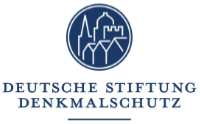Current situation
Southwestern Poland and Eastern Saxony contain a multitude of small and medium-sized towns of special architectural value. At the same time, these towns are particularly affected by demographic and socio-economic change. New construction is often located on the urban outskirts, while historic town centers are losing many of their traditional forms of use despite enormous success in modernizing infrastructure and existing buildings. Vacant residential and commercial buildings pose a threat to the historic fabric, while also leading to a loss of important urban functions traditionally provided by the town center as a place of culture and trade as well as a vital meeting-point. In view of the increasing relevance of soft location factors (e.g. recreational value, range of cultural activities, image) in encouraging new residents as well as businesses to settle, these two factors are threatening to reduce the attractiveness of towns and aggravate the disadvantages of these regional centers. However, the increasing pressures afflicting the conurbations of Wrocław and Dresden (e.g. a lack of affordable housing, rising environmental and traffic problems) represent an opportunity for the small and medium-sized towns of this German-Polish border region, and are fostering a renewed interest in such towns. In particular, the historic small and medium-sized towns in the target area have all the necessary prerequisites for a renaissance: With attractive buildings and compact historic urban structures in the urban core, they offer ideal framework conditions for structural and social revitalization at a time of increased European-wide processes of (re)urbanization.
Project objective
People on a guided city tour, view of the board with information on the renovation of the old town in Görlitz
Guided walk of all project partners in Görlitz in December 2018
Towns in this border region show similar potentials and challenges in terms of their historical development, their urban structures, demographic and socio-economic development, traditions of building and tourism potentials, but also regarding their structural weaknesses in the local economy and the threat of functional loss. The aim of the project “REVIVAL! – The revitalization of historic towns in Lower Silesia and Saxony” was to overcome these challenges and make better use of the development opportunities of small and medium-sized towns by preserving their cultural heritage and enhancing the town centers. In addition to revitalizing and strengthening the inner cities, the project thus pursued the objectives of developing and protecting cultural heritage and improving the quality of life in Lower Silesia and Saxony.
Project measures
An action day entitled “Lebendige Innenstadt” (“Lively Town Centre”) in all of the project’s ten partner towns on the German and Polish sides of the river Neisse was organized to enliven the historic centers, raise awareness of the issues as well as identify new development perspectives. Ten pilot measures, planned and implemented by each town individually and adapted to its needs, are intended to preserve, develop and improve the accessibility of the cultural heritage, increase the sensitivity of the local population to this heritage and make it attractive for tourists. A traveling exhibition showed the history and current potential of the city centers as well as the revitalization successes already achieved. After the end of the project, the traveling exhibition can also be experienced in virtual space, as not only the historic centers of the partner town can be experienced with the help of a 3D application, but also the exhibition as part of the interactive project video. In addition, a student autumn school in September 2019 brought new and creative ideas to the region.
Research questions and methodology
In the project "REVIVAL! - Revitalization of Historic Towns in Lower Silesia and Saxony", approaches to revitalizing historic town centers were tested in practice. In addition, the project examined existing methodological and theoretical approaches to assessing the quality of life in peripherally located historic small and medium-sized towns. In particular, the contribution of cultural heritage was examined. The result is an outlook for an alternative survey methodology of quality of life in this type of town. In addition, analyses of the current contribution of cultural heritage to quality of life were conducted in all ten partner towns. Finally, based on these surveys, strategic recommendations were formulated to help improve leveraging the potential of cultural heritage for quality of life. In addition to ten municipal strategies, a regional strategy was also developed for the entire assisted area.
The Leibniz Institute of Ecological Urban and Regional Development (IOER), represented by the Görlitz-based Interdisciplinary Centre for Transformative Urban Regeneration (IZS), was the project’s lead partner. The scientific partners include the TU Dresden (IHI Zittau), also represented by the IZS in Görlitz, and the Voivodeship of Lower Silesia, represented by the Instytut Rozwoju Terytorialnego (IRT) in Wrocław. Four German towns were involved in the project, namely Bautzen, Görlitz (represented by the Europastadt Görlitz/Zgorzelec GmbH), Reichenbach and Zittau, along with six Polish six towns and municipalities, namely Bolesławiec, Gryfów Śląski, Kamienna Góra, Lubawka, Lubomierz and Żary.



